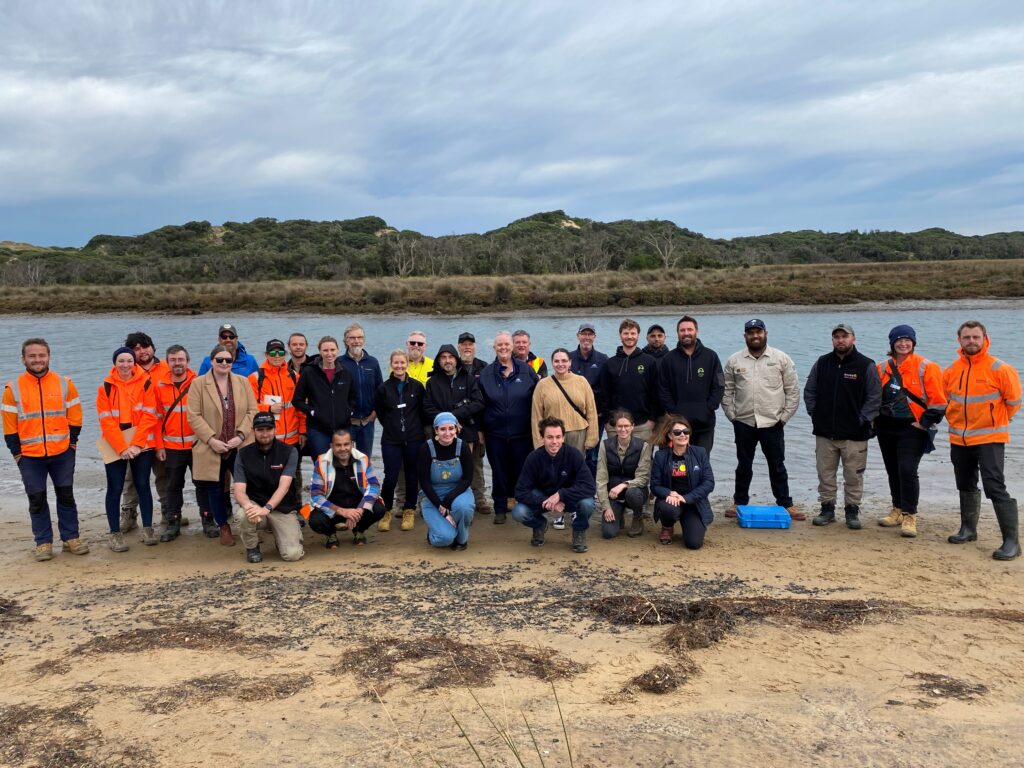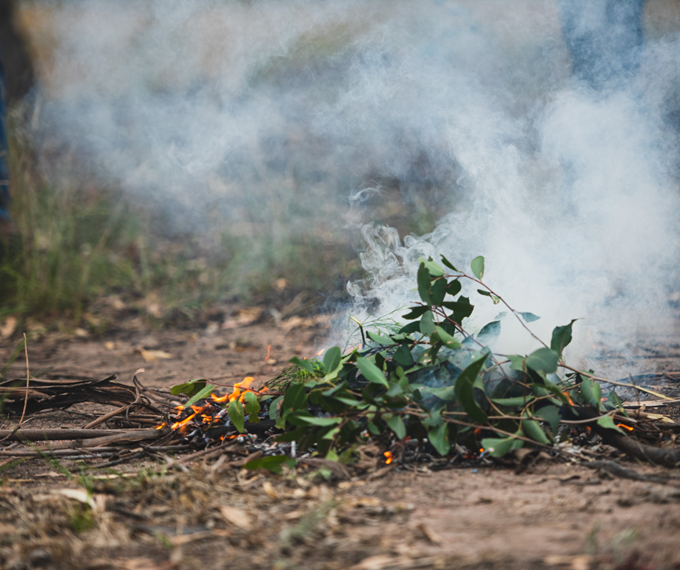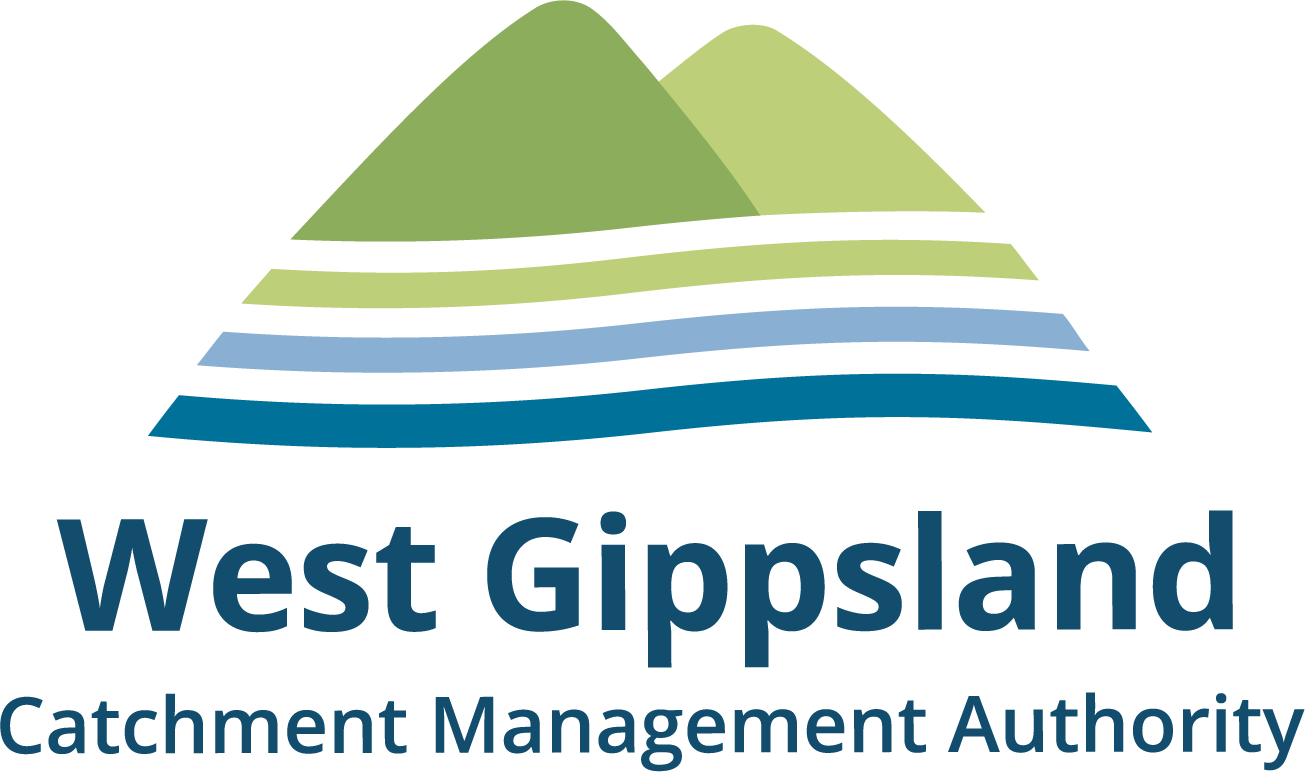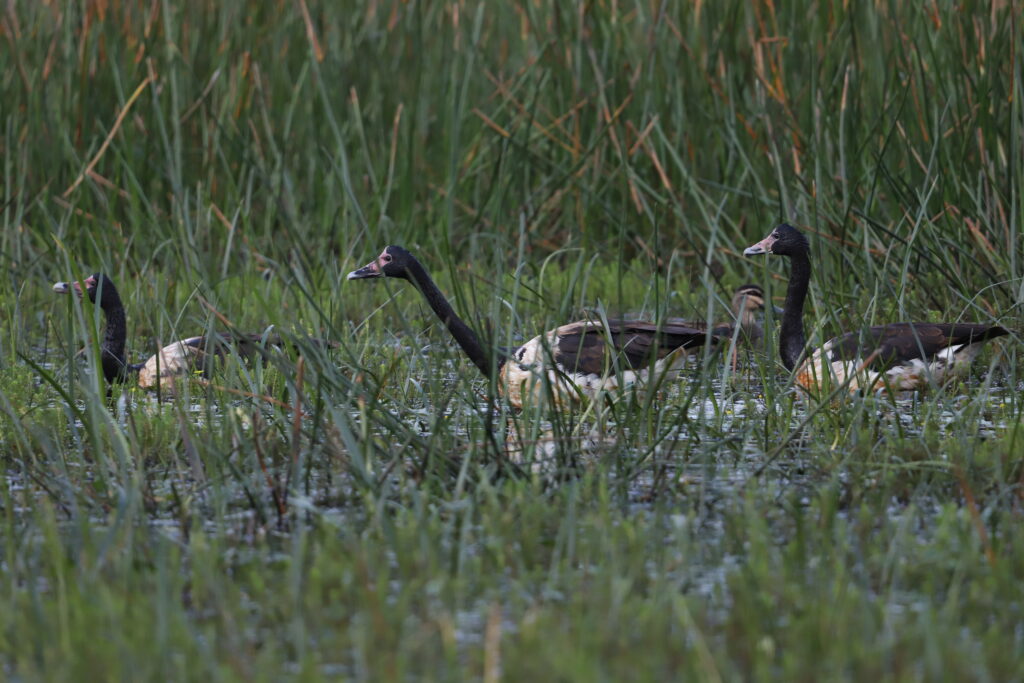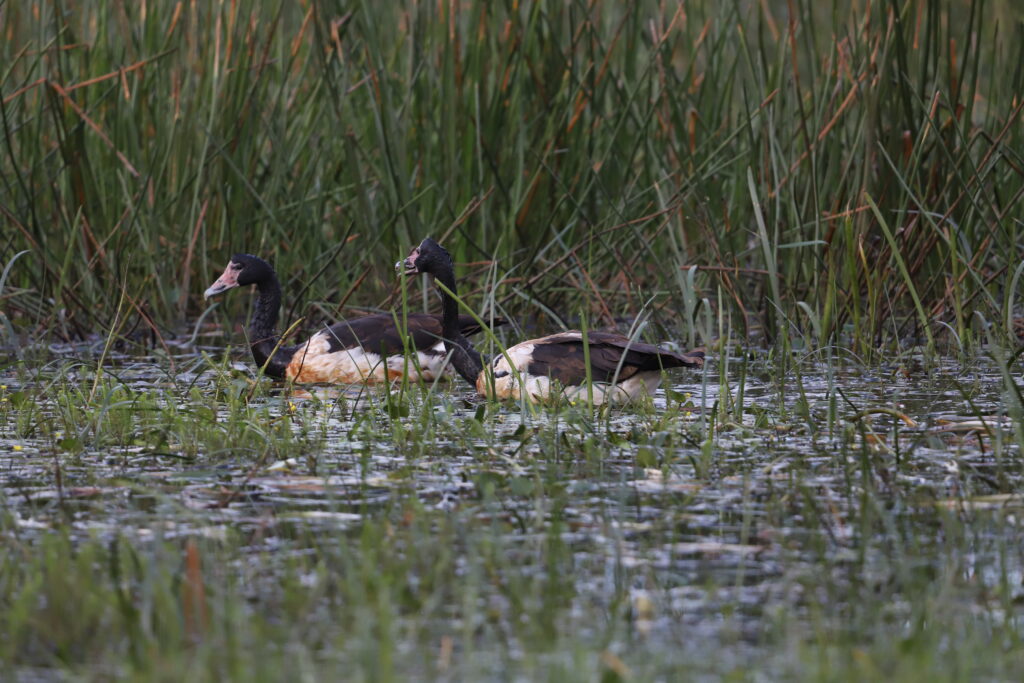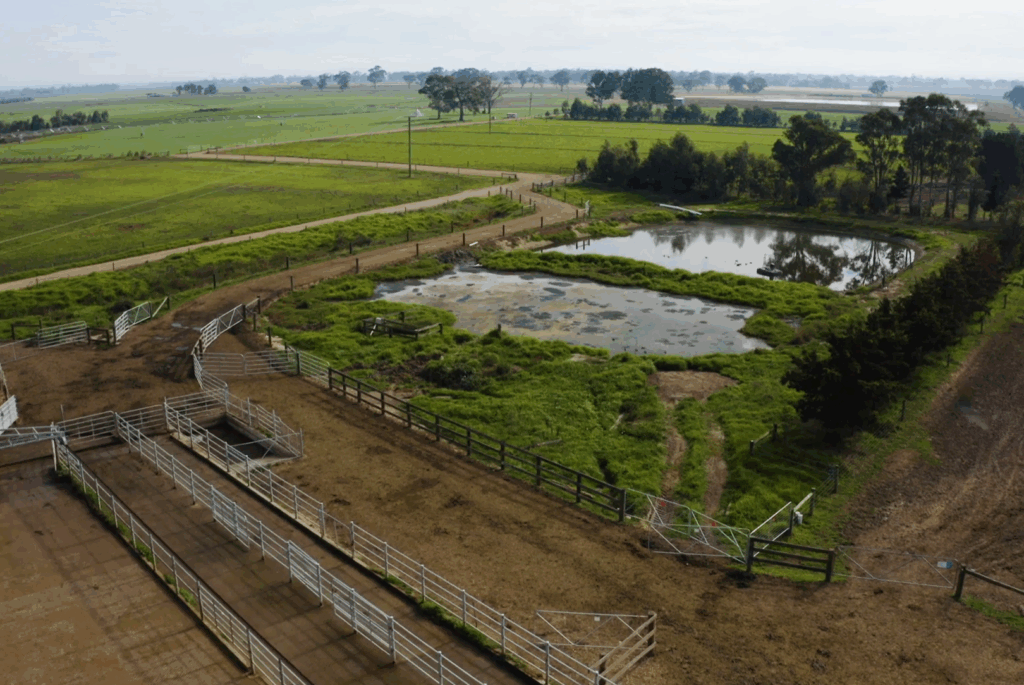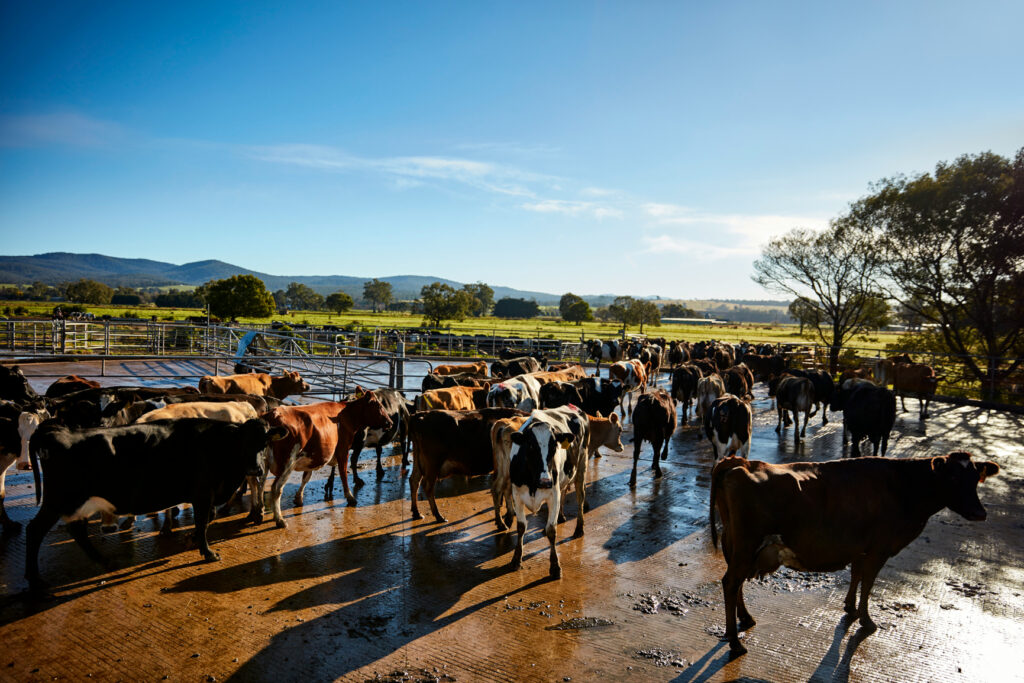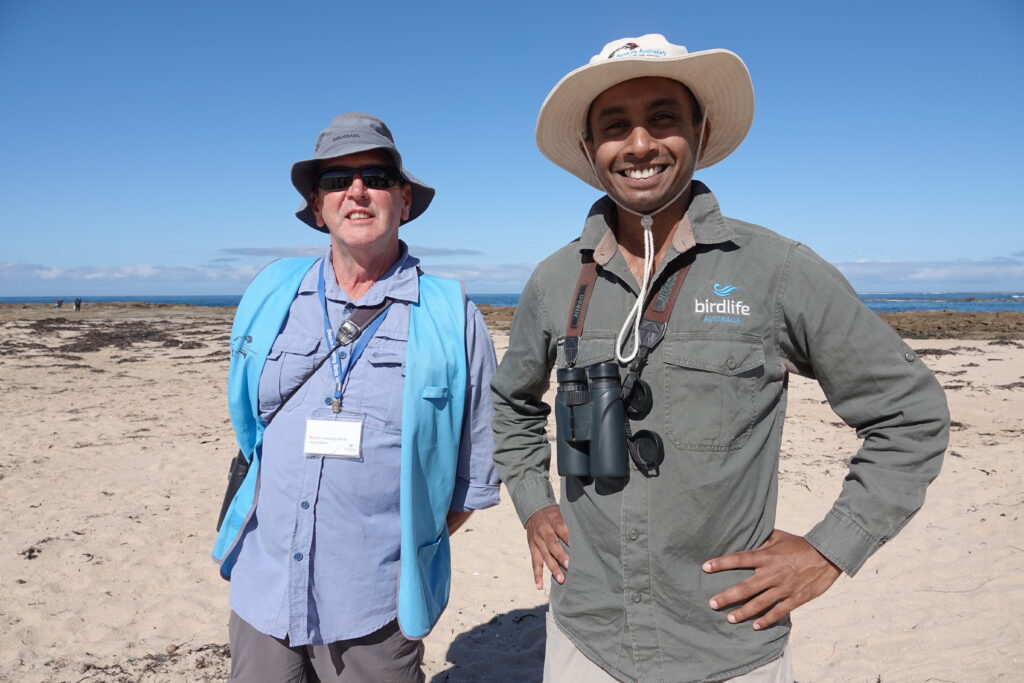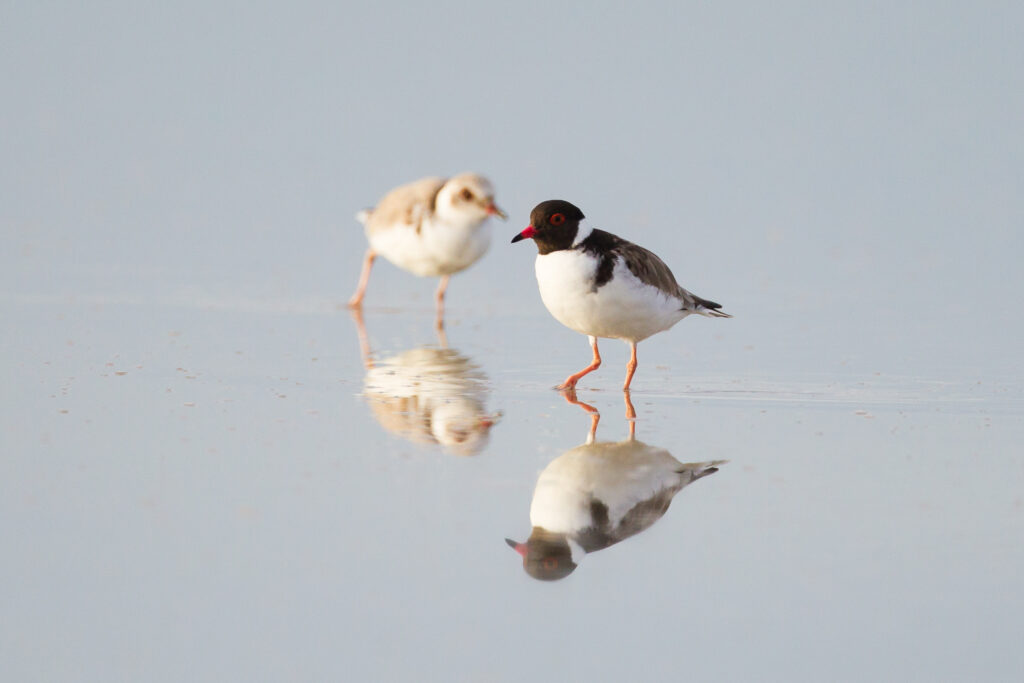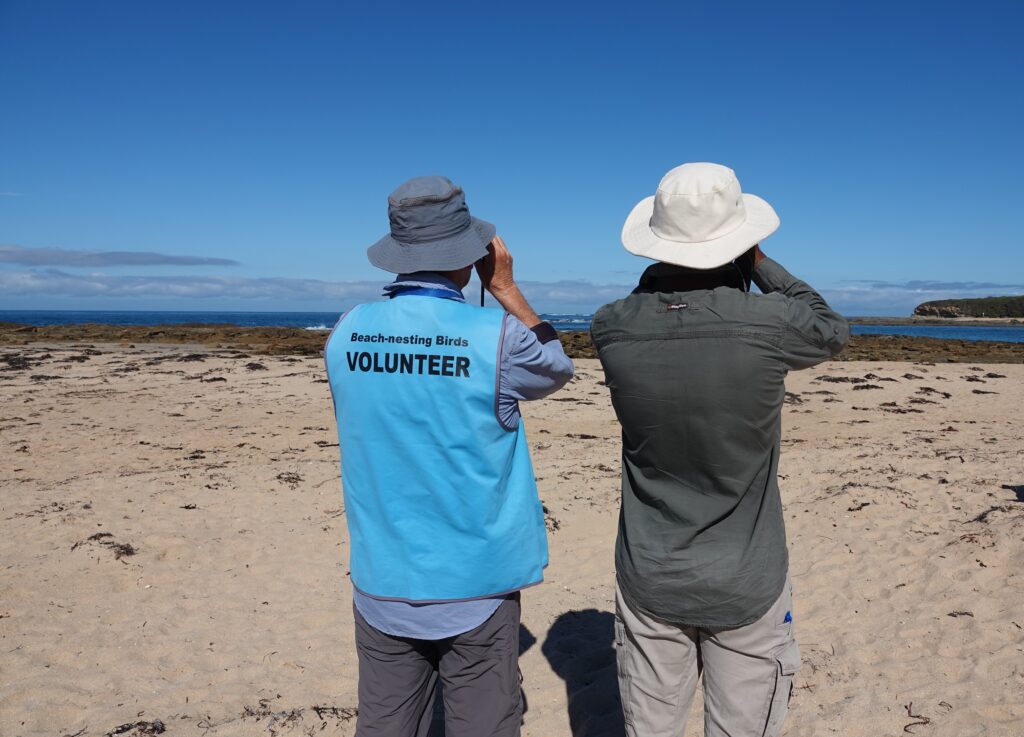Integrated Water Management (IWM) Officer
Are you looking for a place to grow your skills across diverse projects and beautiful landscapes? We’re looking for a passionate IWM Officer to join the team at West Gippsland Catchment Management Authority. Read on to find out why WGCMA is the place for you!
- Full Time (1 FTE) Permanent Position
- Enjoy a great work life balance working model based in Traralgon or Leongatha
About the Role
The IWM Officer is responsible for leading the WGCMA’s contribution to Integrated Water Management (IWM) planning, collaboration, and project delivery. This dedicated role will strengthen the organisation’s strategic engagement in IWM Forums, support internal capacity building, improve outcomes associated with large scale subdivisions and drive the integration of IWM practices across CMA functions.
Classification for this position will be Grade 4 ($81,154 to $117,605 per annum, pro rata).
What will your typical day look like?
- Assess large scale subdivisions to ensure they are identifying and delivering Integrated Water Management Outcomes.
- Coordinate the CMA’s participation in IWM Forums, including planning processes, stakeholder engagement, and shared priority setting.
- Lead or contribute to the development and delivery of IWM plans and initiatives, with a focus on collaborative and cross-boundary solutions.
- Build and maintain partnerships with local government, water corporations, Traditional Owners, and other key stakeholders to co-design and implement IWM opportunities.
- Identify and pursue opportunities to embed IWM principles and outcomes across CMA strategies, operational activities and programs.
- Lead or support the identification and securing of funding to progress priority IWM opportunities.
Let’s talk about you:
We are looking for someone who:
- Engages effectively with diverse stakeholders and builds strong working relationships across sectors.
- Understands and anticipates future challenges and develops clear plans to deliver long-term outcomes.
- Works cooperatively with others to share knowledge and coordinate actions.
- Manages competing priorities and delivers high-quality outcomes in complex and dynamic settings.
- Demonstrates a high level of understanding of Local Government subdivision planning and implementation processes.
Why West Gippsland Catchment Management Authority?
We focus our energy on interesting and meaningful work
With a culture of continuous improvement, we are always striving to make a positive difference to our communities and create a healthier environment. We put our people at the heart of what we do and are dedicated to helping them grow their careers and reach their professional goals.
We value flexibility
Work in a way that suits you best, flex time, job share arrangements or work from home. We know our people get their best work done when they are in control of where and how they work, designing their work week around their team and personal commitments.
We support you to thrive
To support your professional life, we offer a range of wellbeing initiatives, including regular events and programs, Employee Assistance Program, leave options, flexible working options, parental leave and return to work support packages.
Next Steps:
Sound like the sort of role for you? Apply now, we’d love to hear from you.
To apply please send your application to recruitment@wgcma.vic.gov.au, by 5pm Monday 28 July, 2025.
So, we can learn more about you, we strongly encourage you to address the Key Selection Criteria outlined in the Position Description under Item “F”.
If you have any questions or wish to have a confidential conversation about this role, please contact Penny Phillipson Statutory Planning Manager on 1300 094 262 or email pennyp@wgcma.vic.gov.au.
If you need assistance during the application process for accessibility reasons please contact Madelyn Brand, Organisational Development Lead on 5175 7843 or email madelynb@wgcma.vic.gov.au.
At WGCMA, we share a commitment to value and embrace diversity in all forms; so that our work environment is a safe space we can all belong. All qualified applicants will receive consideration for employment regardless of their background, identity, orientation, ability or thinking style.
Water the key to future proofing Gippsland farms
Access to water means everything to farmers and working to maximise this precious resource is key. Recently, West Gippsland Catchment Management Authority (CMA) was proud to host the state’s sustainable irrigation support staff for a two-day forum, in collaboration with Agriculture Victoria. Attendees shared knowledge and heard from Gippsland farmers on the ground where the impacts of their work are showcased best.
“For the past 25 years, West Gippsland CMA’s sustainable irrigation program has worked to reduce the environmental impact of irrigation and increase efficiencies and productivity for busy farmers,” said Anthony Goode, Sustainable Irrigation Project Officer for West Gippsland CMA.
“This successful model is replicated in CMAs across Victoria supported by Agriculture Victoria through Department of Energy, Environment and Climate Action.
A highlight of the program was a full day farm tour across the Gippsland region, to meet the farmers and learn about the benefits, challenges and opportunities of sustainable irrigation firsthand.
On board the bus were representatives from CMAs across the State, DEECA, Agriculture Victoria and Southern Rural Water. As they travelled, CMA and Agriculture Victoria team members gave a quick history of the Macalister Irrigation District.
They discussed tackling the ongoing challenge of irrigation-induced salinity. The area’s intricate drainage network was developed in the 1960s with 500 kilometres of constructed drains and 19 groundwater control pumps. These systems, along with improving irrigation efficiencies and modernisation have helped to ensure a prosperous and resilient irrigation industry for the region.
First stop on the tour was Willandra Farms in Clydebank. The certified organic farm sits in stark contrast to surrounding properties with swathes of revegetation, wetlands, solar panels and wind turbines. Operating on regenerative principles, the family has a desire to become carbon neutral and is already running fixed spray and pipe and riser irrigation using solar power.
Wilco Droppert and Sandra Jefford, their son Luke and daughter Sophie thrive on innovation and are always ready to participate in trials. Most recently it was the site of a sustainable irrigation demonstration site showcasing their ability to maximise solar energy utilisation in their irrigation system.
Son and second generation farmer, Luke, spoke passionately about the farm and their sustainable irrigation journey and how it is a living representation of the family’s values.
Next up was Jessica and Stephen Knight’s Dairy Farm in Llowalong, located within the area of the proposed Macalister Fresh irrigation district expansion, being planned by Southern Rural Water. The couple’s focus is on farm development for future water security and best practice supported by their detailed Farm Plan.
The farm is located next to the Avon, the fastest rising river in the southern hemisphere. “We need to get our pumps out every time someone sneezes,” joked Jess as she welcomed the group.
Jess and Stephen gave a great summary of the importance of water security in farming and how embracing opportunities and new technologies when they happen is a key strategy for successful farming.
Irrigation farm planning, a process supported by the Sustainable Irrigation Program, is fundamental to helping achieve their business goals.
“Farm plans are an essential part of the process,” Caelan McIntosh, Agriculture Victoria Irrigation Extension Officer told the group. “The plans give farmers, regulators and importantly the bank managers, all the information and confidence they need to invest in irrigation and their business.”
The couple has put in three new pivots, pipe and risers and a turkey’s nest dam.
“Our biggest issue is water security. These measures to secure water allowed us to expand and was a catapult for all we’ve achieved. You’ve got to be on the front foot and make decisions quickly – that’s what the drought taught us,” said Jess.
“But the decisions have to stack up – it’s a business not a hobby,” Stephen quickly added.
The group then travelled to Lindenow Valley on the Mitchell River in East Gippsland to see vegetable production in action in the rich, fertile Lindenow Valley. Bulmer Farms is one of approximately 12 commercial vegetable growers in the Valley and is one of Australia’s biggest salad producers.
The team explained that the 2,000 acre farm produces baby leaf salads and employs 130 people. The farms utilises water allocations from the Mitchell River and some groundwater and has also built a 300 Megalitre storage dam to further increase their water security. “Water is a future proofer,“ they told the group.
Anthony Goode summed up the event as the bus pulled back into Sale. “Days like this highlight the importance of working together over decades to make real and lasting change. We were incredibly proud to showcase the region and its people, learn from each other and talk through the challenges and opportunities ahead and how we can use innovation and collaboration to tackle them head on.”
West Gippsland CMA has been partnering with Federal, State and local agencies, industry groups and landholders to improve the health of the Gippsland Lakes for over 25 years. Their Sustainable Irrigation Program in the Macalister Irrigation District supports innovative irrigation and nutrient management technologies in the Lake Wellington Catchment. Its success relies on famers like those met on the tour and of irrigators being prepared to host demonstration sites on their farms.
Implemented with Agriculture Victoria, in partnership with Southern Rural Water, the Sustainable Irrigation Program supports local irrigators to implement on-farm management practices that improve water use efficiency and reduce agricultural runoff. Over the 25 years, the cumulative efforts of the Program and the irrigation community have now reduced exports of nutrient rich agricultural runoff by over 46 billion litres of water each year and prevent 23 tonnes of Phosphorous from entering the Gippsland Lakes.
West Gippsland CMA is responsible for over 40,000 kilometres of designated waterways across the region and delivers programs for healthy and resilient catchments. All these waterways flow to the Victorian coast, discharging through the Gippsland Lakes, or directly into Bass Strait and the Southern Ocean.
Become a river lover
Find out more about the work we do and sign up to our e-news for updates.
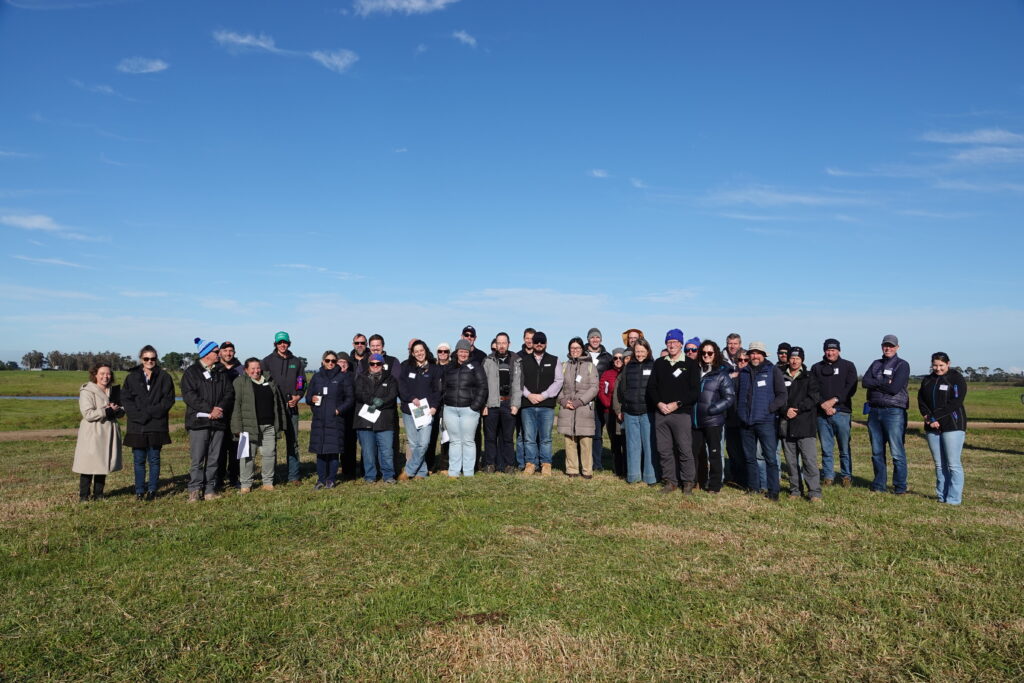
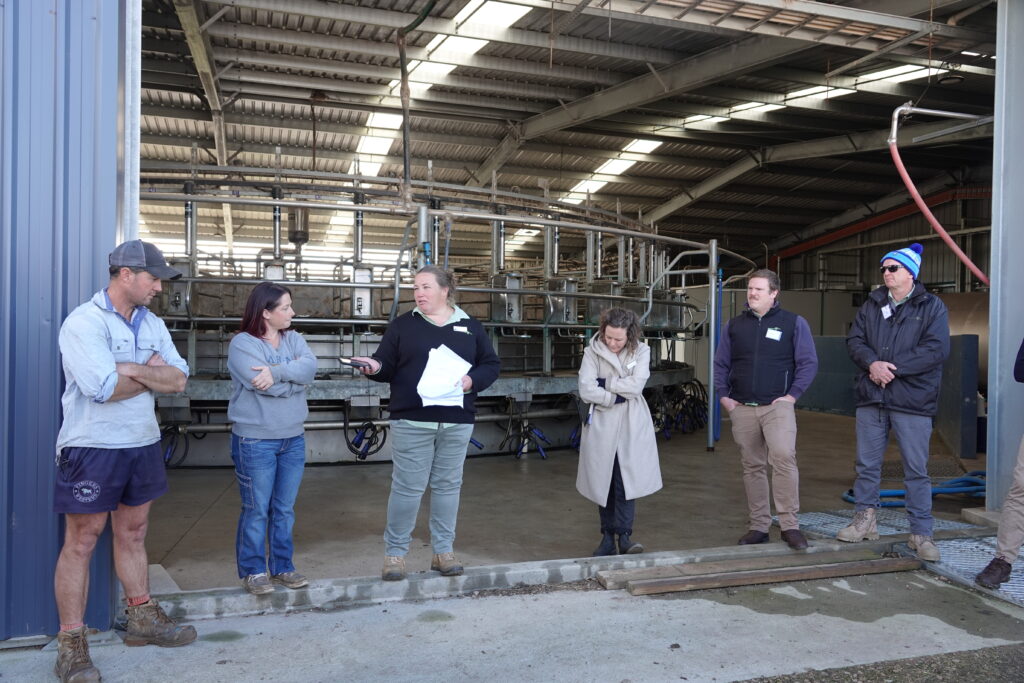
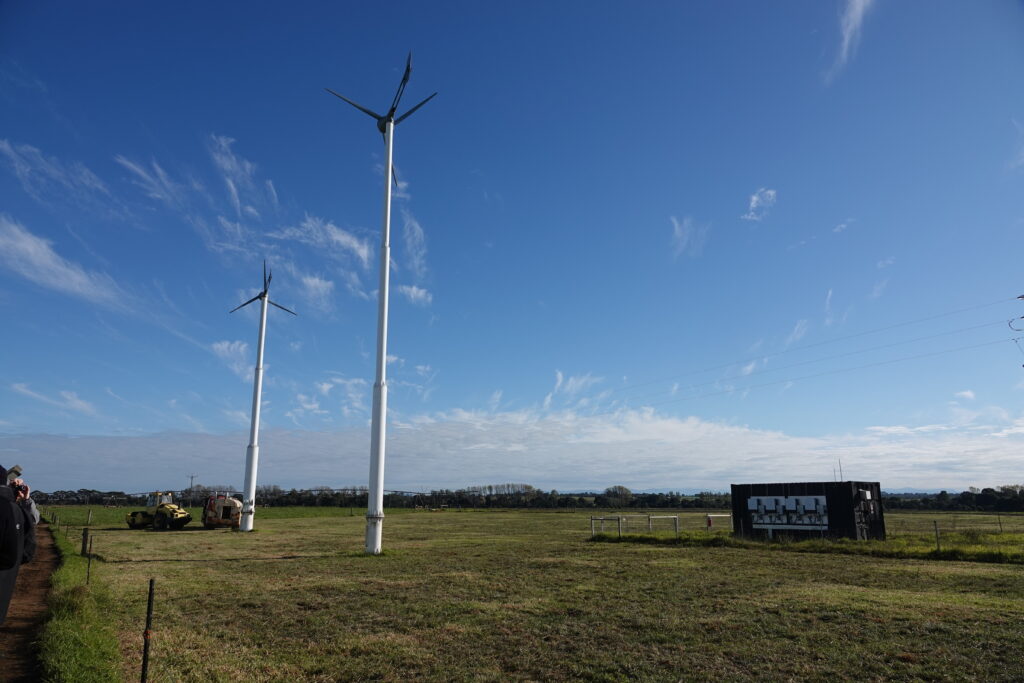
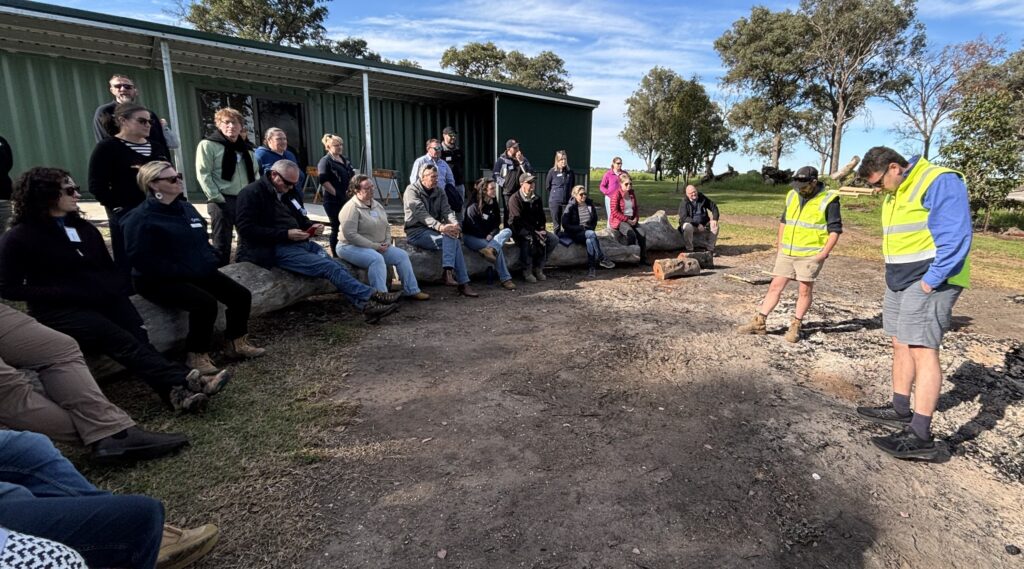
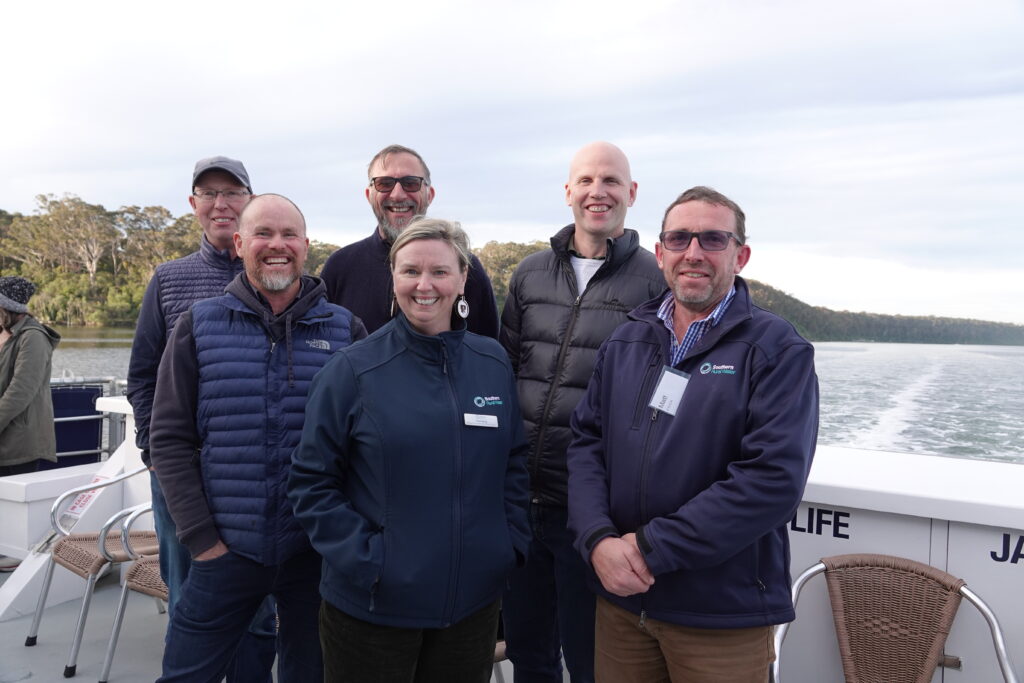
Regional Landcare Co-ordinator
Are you looking for a place to grow your skills across diverse projects and beautiful landscapes?
We’re looking for a passionate Coordinator to help share the story of West Gippsland Catchment Authority.
Read on to find out why West Gippsland GCMA may be the place for you.
- Part Time or Full Time (up to 1 FTE) Permanent Position
- Enjoy a great work life balance with a hybrid model based in Traralgon or Leongatha.
About the Role:
As our Regional Landcare Coordinator, you’ll support our Catchments and Community team to coordinate the CMA’s Regional Landcare Program, including implementing the Regional Landcare Support Plan and the Victorian Landcare Grants program in West Gippsland.
You will work closely with other CMA staff and play a key role in promoting, improving and influencing the coordination and success of Landcare within the West Gippsland region.
What will your typical day look like?
- Coordinate the West Gippsland CMA Regional Landcare Program and the implementation of the Regional Landcare Support Plan
- Support Landcare Networks to build their capacity to meet the needs of their member groups including the establishment of new groups
- Support and encourage the use of social media tools that enhance the communication for Landcare
- Support the delivery of the Victorian Landcare Grants at a regional level including design, promotion, application guidance and assessment
- Be the key liaison between West Gippsland CMA and the five Landcare Networks with a focus on maintaining and growing the partnerships.
Let’s talk about you:
We are looking for someone who will have:
- Highly developed and demonstrated interpersonal skills suited to developing and maintaining partnerships with diverse stakeholders with a range of views and levels of understanding
- Demonstrated skills and experience in community capacity building and facilitation
- Well-developed communication skills, including report writing and presentation skills
- Demonstrated communications experience including social media releases and creating engaging content.
Why West Gippsland Catchment Management Authority?
We focus our energy on interesting and meaningful work
With a culture of continuous improvement, we are always striving to make a positive difference to our communities and create a healthier environment. We put our people at the heart of what we do and are dedicated to helping them grow their careers and reach their professional goals.
We value flexibility
Work in a way that suits you best, flex time, job share arrangements or work from home. We know our people get their best work done when they’re in control of where and how they work, designing their work week around their team and personal commitments.
We support you to thrive
To support your professional life, we offer a range of wellbeing initiatives, including regular events and programs, Employee Assistance Program, leave options, flexible working options, parental leave and return to work support packages.
Next steps:
Sound like the sort of role for you? Apply now, we’d love to hear from you.
To apply please send your application to recruitment@wgcma.vic.gov.au by 9am Monday 14 July 2025.
So, we can learn more about you, we strongly encourage you to address the Key Selection Criteria outlined in the Position Description under Item ‘F’.
If you have any questions or wish to have a confidential conversation about this role, please contact Deb Archer, Manager Catchments and Communities on 1300 094 262 or deba@wgcma.vic.gov.au.
At West Gippsland CMA, we share a commitment to value and embrace diversity in all forms; so that our work environment is a safe space we can all belong. All qualified applicants will receive consideration for employment regardless of their background, identity, orientation, ability or thinking style.
If you need assistance during the application process for accessibility reasons please contact Madelyn Brand, Organisational Development Lead on 03 5175 7839 or madelynb@wgcma.vic.gov.au.
We acknowledge and pay or respects to the Traditional Owners of the region, the Gunaikurnai, the Bunurong, the Boonwurrung and the Wurendjeri Peoples and pay respects to Elders, past, present and emerging.
Expressions of Interest Cleaning Services
Expressions of Interest are invited from suitably qualified contractors to provide cleaning services for the West Gippsland CMA Leongatha office and depot.
The contract is for a period of three years with the option of a further two years and will commence the week beginning Monday September 1, 2025.
Tours of both premises will be on Wednesday 16 July, this will provide an opportunity for you to inspect the premises and ask any questions prior to submitting your EOI. For further details or to register your interest in a tour, contact Janine Clark on 5613 5960.
More information can be found in the project brief, applicants must submit an EOI using this online Provision of Cleaning Services form, submissions must be received by 5pm Monday July 28, 2025.
Chasing foxes and dreams for a healthy Corner Inlet
Capturing an elusive fox on Dream Island, tackling weed infestations and keeping watch over threatened beach nesting birds are just some events in the compelling story of the past year of Gippsland Catchment Management Authority’s (CMA) Corner Inlet Connections project.
“It’s been another successful year of dedicated work in the Corner Inlet Ramsar site where, for nearly two decades, we’ve been working with partners and community to protect the inlet’s significant natural values,” said Tanya Cowell, Waterways Officer for West Gippsland CMA.
“We’re pleased to share what’s been achieved in partnership with Parks Victoria, Trust for Nature, Birdlife Australia and specialist contractors,” said Tanya.
“Every effort is an important step towards our shared goal of a healthy and resilient inlet that we can all enjoy – whether you are a fisher, farmer, birdwatcher, walker or boater. We all love the inlet in our own special way and want it cared for.”
A huge effort was in tackling Spartina infestations across the entire Ramsar site to protect habitat. The weed was treated in summer and autumn by ground and air. The coordinated approach with Parks Victoria saw remote and previously inaccessible areas that flow into the Marine Park treated. Long term monitoring shows this consistent annual treatment is significantly reducing this threat – a major win for the environment and wildlife.
Protecting an additional 20 hectares of habitat was another great win with Trust for Nature leading a program to protect saltmarsh through weed control and fencing from stock on private properties in the Tarraville and Hedley areas. Multiple landholders have expressed interest in being involved with the project and the Trust is currently assessing projects for future years. Landholders wanting to come on board can contact Billie Emmett, Trust for Nature, at billiee@tfn.org.au
Foxes are the number one predator for the Inlet’s beach nesting birds including Hooded Plovers and Small Terns.
Partners at BirdLife Australia monitored for foxes on the Inlet’s four barrier islands (Dream, Box bank, Clonmel and Snake).
An elusive resident fox on Dream Island was caught thanks to a determined contractor. The (approximately) 500 hectare Island is critical habitat for vulnerable beach nesting bird species to breed, and the removal of this fox will increase the likelihood of breeding success. Remote sensing cameras detected another fox that will be targeted in 2025-26.
Summer and winter monitoring of beach nesting birds by BirdLife Australia and a team of highly skilled and dedicated volunteers showed generally low success in chicks fledging despite the birds putting in their best efforts. Hooded Plovers made 27 nesting attempts across four islands, yet only two fledglings were produced on Dream Island. Similarly low fledgling rates were seen for the Inlet’s Pied Oystercatchers, Crested, Caspian, Fairy and Little Terns. These failures are largely due to predators, high tides and people.
“Disappointingly, human impacts to these remote islands are also a key factor. We have frequently seen off leash dogs, illegal campfires and dumped rubbish. We will work on further management actions to limit threats to future breeding seasons. We are all in this together and ask everyone who uses the inlet to play their part in creating a healthy future.”
So, it’s off and running for works planned for 2025-26 that will once again focus on protecting key Ramsar values.
This project is funded by the Australian Government Natural Heritage Trust and delivered by West Gippsland CMA, a member of the Commonwealth Regional delivery Partners panel.
West Gippsland CMA is responsible for over 40,000 kilometres of designated waterways across the region and delivers programs for healthy and resilient catchments. All these waterways flow to the Victorian coast, discharging through the Gippsland lakes, or directly into Bass Strait and the Southern Ocean.
Become a catchment lover
Find out more about the work we do and sign up to our e-news for updates.
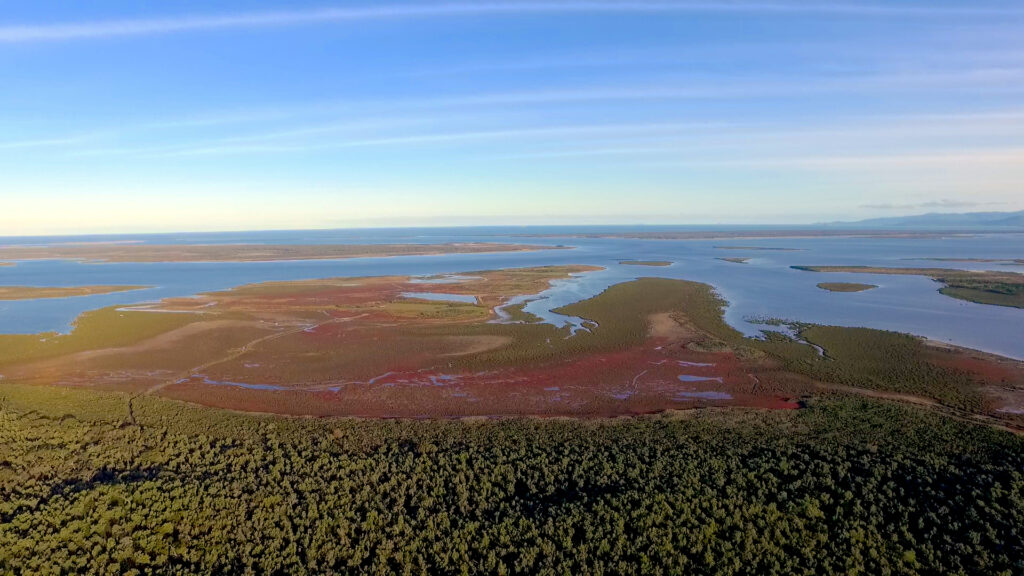
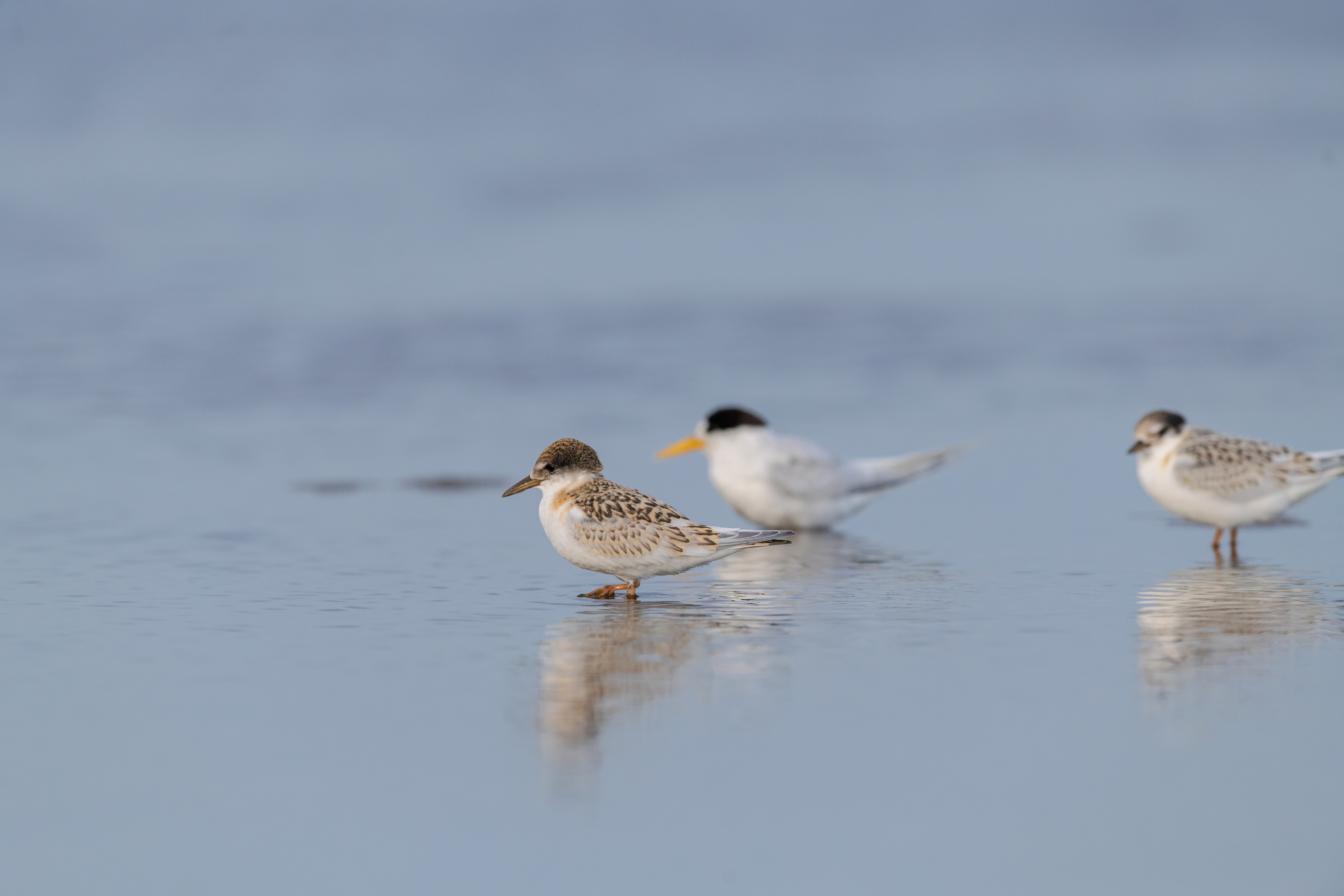
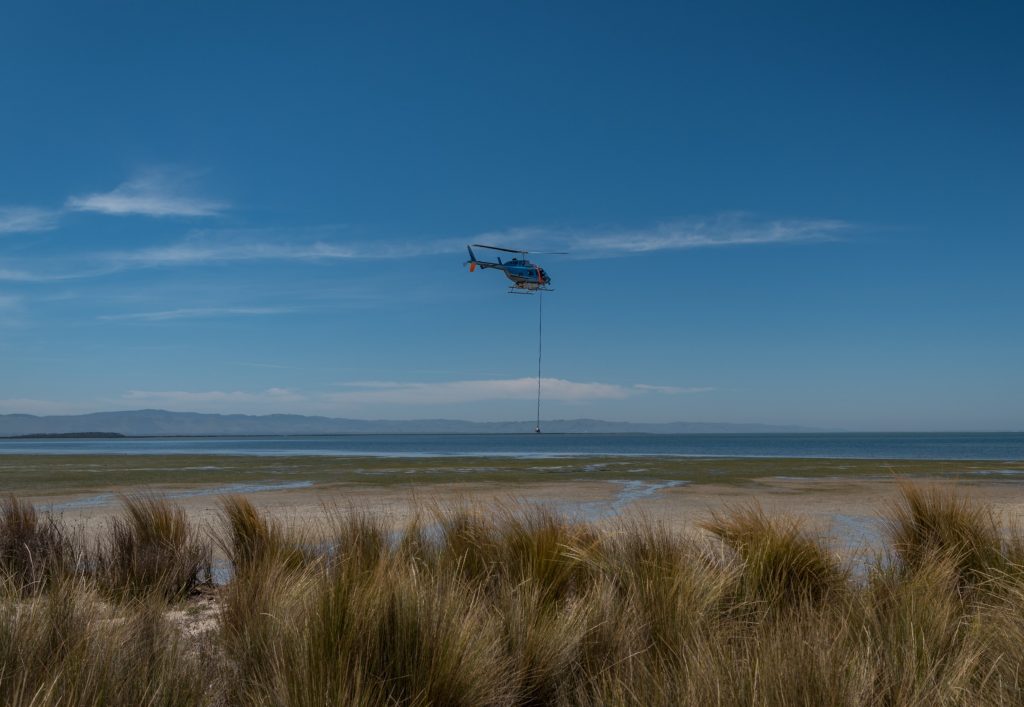
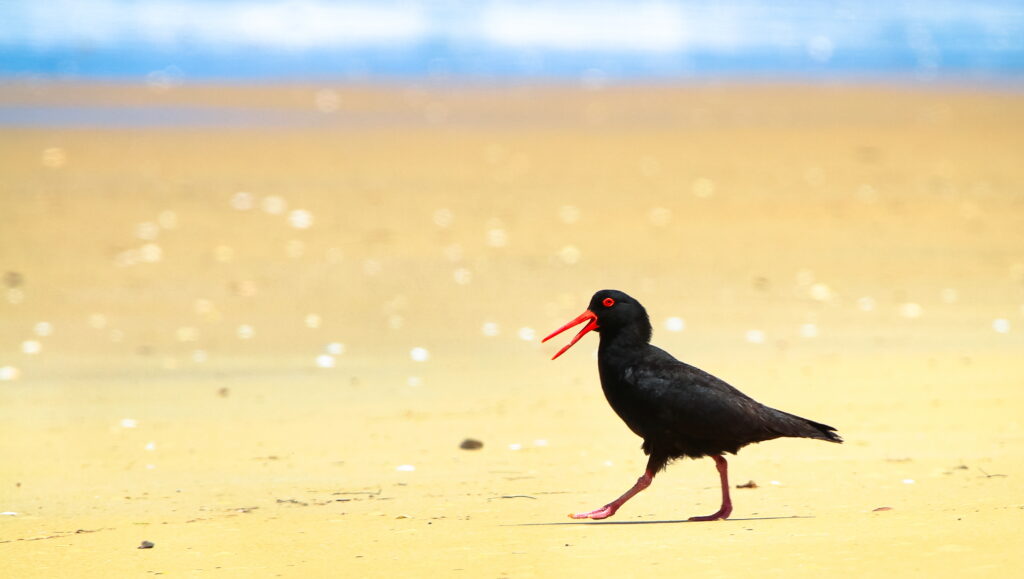
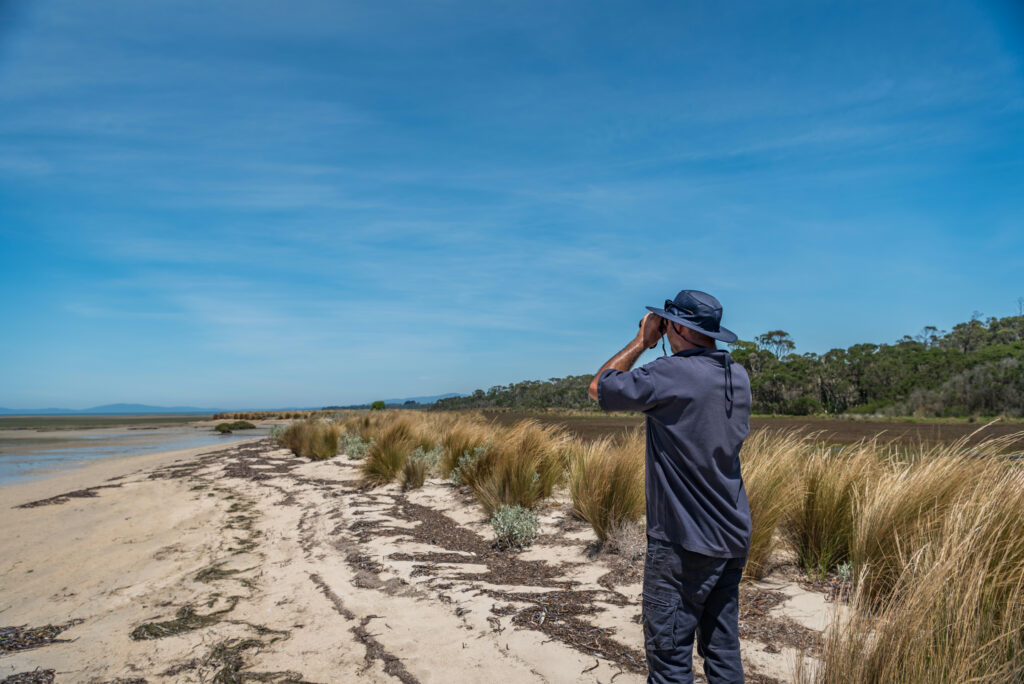
Rare magpie geese visit Gippsland Lakes
Two rare sightings of Magpie Geese have been confirmed on across the Gippsland Lakes catchment in both Maffra and Bairnsdale.
“We are excited about these sightings of Magpie Geese visiting Gippsland,” said Sean Phillipson, Senior NRM Advisor for East Gippsland Catchment Management Authority.
The birds are found on floodplains and in freshwater wetland areas across coastal northern and eastern Australia but are a rare visitor to Victoria where their conservation status is listed as Vulnerable.
Passionate field naturalist Duncan Fraser, a resident in the Maffra-Newry area since 1945, spotted three birds near Newry Creek. A member of the public reported a further three Magpie Geese in Bairnsdale with East Gippsland CMA confirming both sightings and also that they were two separate groups of geese.
“Magpie geese were once widespread across freshwater wetlands of Gippsland and Victoria but historic over-hunting, draining of wetlands and intensification of agriculture changed this,” said Mr Phillipson.
“The birds in Bairnsdale looked to be sub-adults and could be using the area as a stopover refuge. Magpie Geese often form breeding groups of three – two females and one male.”
Magpie Geese need freshwater wetlands and aquatic vegetation to survive.
“These sightings demonstrate that wetlands and vegetation around the Lakes are acting as a refuge and that the right habitat can be an important place for our wildlife – no matter how small.”
“These rare visitors are something we can all celebrate and are a result of the combined effort to enhance and protect the health of the wetlands around the Lakes,” concluded Mr Phillipson.
You can help
- Magpie Geese are large black and white birds with a red beak. If you see any Magpie Geese, we would love you to log the sighting with BirdData either online or via the app.
Home to the smallest of fish through to the largest of birds, Gippsland Lakes on Gunaikurnai Country covers 60,000 hectares and are home to around 400 indigenous plants, 300 native wildlife species and are recognised as a feeding ground for migratory birds that travel from as far away as Siberia. That is why they are one of 67 wetlands in Australia listed under the Convention on Wetlands of International Importance (Ramsar Convention).
From barren to beautiful thanks to a farm fence
A fencing grant from West Gippsland Catchment Management Authority (the CMA) and partners has helped transform a local beef farm into a tranquil landscape filled with birds and wildlife – all while protecting its prize asset – the cows.
In 2017, Brent and Amy Richardson were staring at an empty landscape on their 116 acre property in Ryanston, where they run Blue Gum Beef.
“It was barren – barely any trees or wildlife,” said Amy.
With no fencing or vegetation along the one and a half kilometre stretch of Archies Creek that runs through their farm, cattle were getting into the creek and causing problems.
“They were trampling on the banks and causing erosion, which was a hazard for calves who’d roll down the steep banks and get stuck,” explained Brent. “I was always having to check the creek for stranded calves and often they’d be rejected by their mother, so we’d then have to hand rear them. It was extra work.”
Thanks to a tip from his stock agent, Brent successfully applied for a farm fencing grant on offer by the CMA and partners at the time. The grant covered the cost of material for three kilometres of fencing, which he installed in sections over the next two years. Bass Coast Landcare Network chipped in to help spray the weeds before rolling up their sleeves to assist in planting a total of 10,000 native trees, shrubs and grasses along the creek bank.
Today, the riparian zone along the creek is unrecognisable, with tall trees and a thick, lush understory teeming with birds and wildlife.
“We initially wanted fences along the creek to keep the cattle out, but it’s been so much better than that,” said Brent. “The vegetation has flourished, wildlife has returned and the entire area is more tranquil. It’s lifted the whole property.”
Amy agrees: “So much goodness has come of this work. You can hear the birds now – we never had that before. We’ve seen echidnas, wombats, possums – even eagles. The whole process was great, and I highly recommend it to anyone wanting to re-establish ecosystems on their property.”
The CMA is pleased to continue supporting farmers with the costs of fencing to protect biodiversity through our Climate Smart Farmers project. More information about this initiative will be available soon.
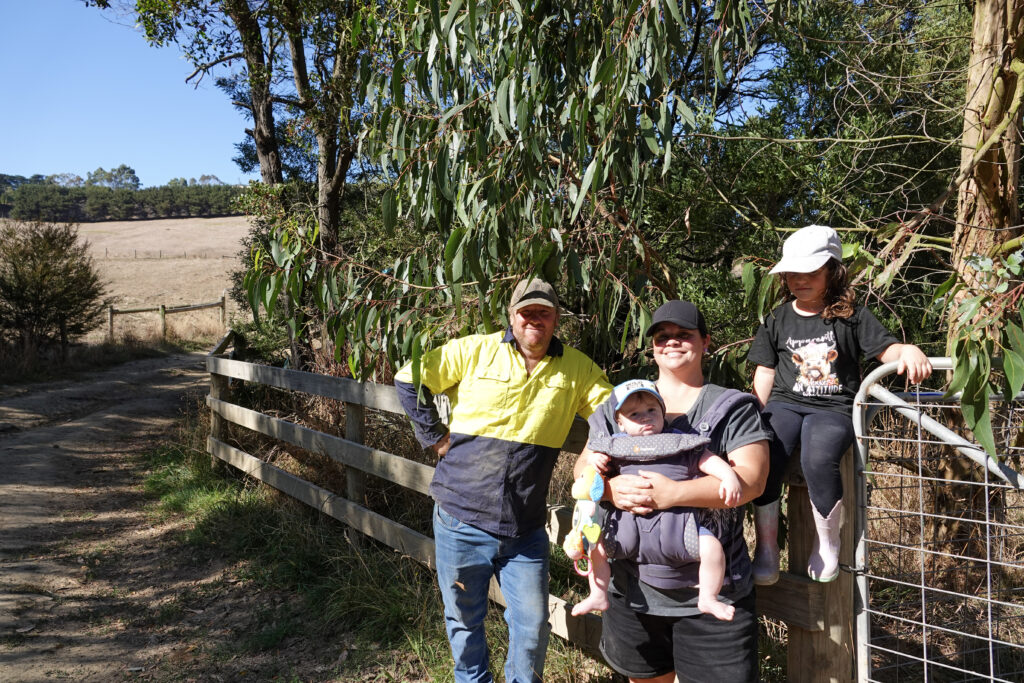
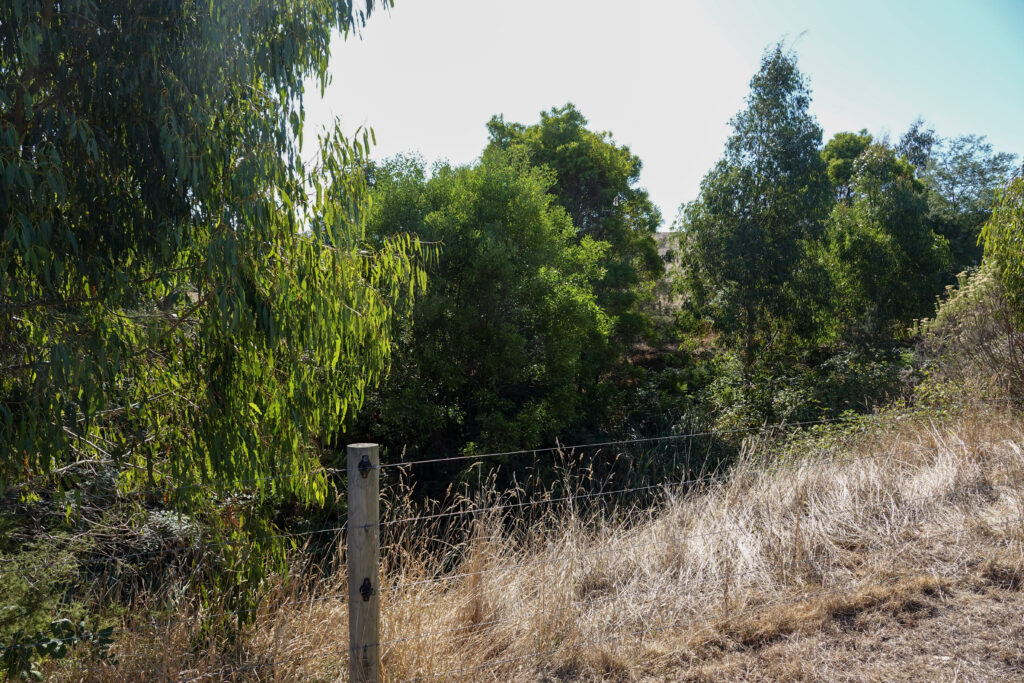
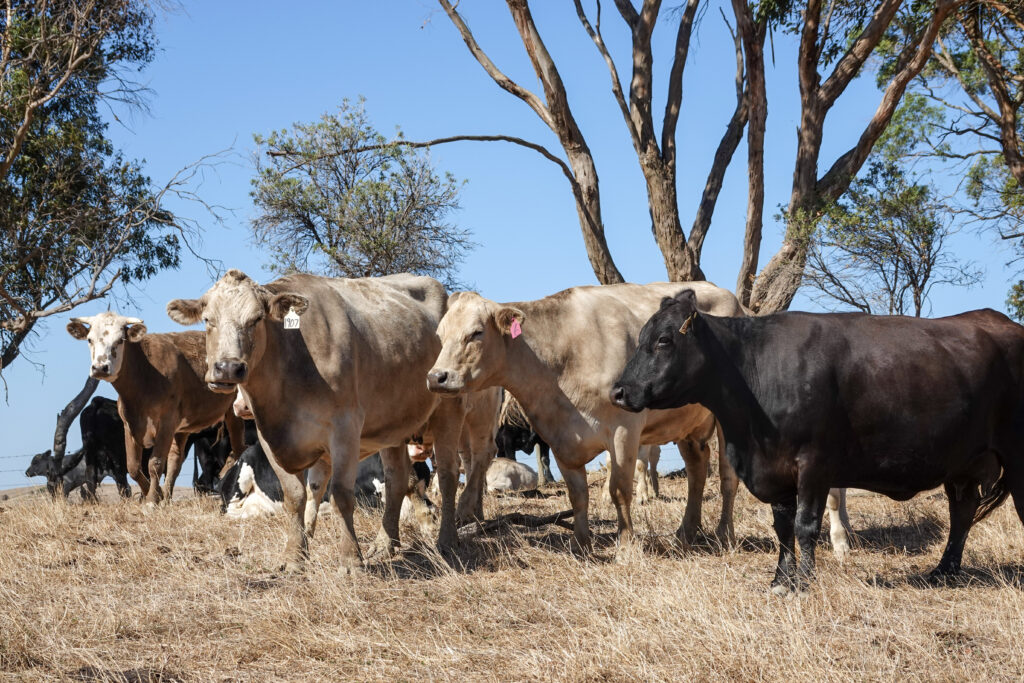
Muck and money – making the most of manure
Farmers are set to make the most of manure thanks to new funding for local dairy farmers.
West Gippsland Catchment Management Authority (CMA) and GippsDairy are inviting expressions of interest from dairy farmers in the Macalister Irrigation Area (MIA) to join a project aimed at boosting the benefits of effluent on farm and ultimately reducing effluent entering the Gippsland Lakes.
Up to 15 dairy farmers will have the opportunity to work with a qualified agronomist to develop a Nutrient and Effluent Management Plan and introduce innovations to better utilise effluent nutrients to improve production, save money and protect the environment.
“By maximising the use of effluent across the farm, farmers can improve soil health by having to apply less synthetic fertiliser, saving money and emissions,” said Anthony Goode – Sustainable Agriculture Program Coordinator for West Gippsland CMA.
“We know dairy effluent is a highly valuable source of nutrients, particularly nitrogen and phosphorous. Farmers who effectively keep these nutrients on farm are not only improving their soils and pasture for cattle, they’re also protecting local waterways which ultimately flow into the Gippsland Lakes Ramsar listed wetlands,” explained Anthony.
The project aims to help farmers increase the area of effluent distribution on their farms by providing customised advice and practical support to upgrade infrastructure and improve effluent management practices.
Each Nutrient and Effluent Management Plan developed will clearly identify key recommendations that will improve effluent management decisions. The plans will use soil test data to advise on future nutrient application rates across the farm and how best to achieve this.
Participating farmers will receive funding to support the cost of implementing the recommended actions from the plan, such as upgrades to mains pipelines or effluent ponds.
“We’ve been partnering with farmers for over 25 years to drive sustainable agriculture practices in the region and this project is another great example of working together for the benefit of farming and the overall health of the catchment,” concluded Anthony.
How to apply
Expressions of interest opened at 9am Sunday 1 June and closed at 5pm Monday 16 June 2025.
Grants will be allocated to 15 eligible applicants on a first-come, first-served basis.
If you have any questions, please email dairy@wgcma.vic.gov.au
This project is supported by the Australian Government through funding from the Natural Heritage Trust under the Climate-Smart Agriculture Program.
West Gippsland CMA is responsible for over 40,000 kilometres of designated waterways across the region and delivers programs for healthy and resilient catchments. All these waterways flow to the Victorian coast, discharging through the Gippsland Lakes, or directly into Bass Strait and the Southern Ocean.
Become a river lover
Find out more about the work we do and sign up to our e-news for updates.
Page updated 16 June 2025
Not on our watch: saving a species from extinction, one walk at a time
Every day over summer David Hartney goes for a walk along the beach at Cape Paterson. He takes his time, observing the changes in the dunes, the telltale tracks of wildlife, the rise and swell of the tide.
He recognises a single, tiny track in the sand. ‘KK’ has been here. He can’t see her but knows she’s around. Just like he knows that ‘DH’ now lives in Sandy Point and ‘EZ’, despite an injury, made it all the way to Lorne.
He knows because he’s been tracking these beaches for five years.
EZ, DH and KK, aka ‘Stumpy’ are Hooded Plovers, and their lives – from chick to fledgling to breeding adult – are recorded by David and a tribe of volunteers who take to the beaches during the spring-summer breeding season to help save this threatened species from extinction.
Tough, tenacious and resilient is how he describes the tiny, beach-nesting birds who must battle people, pets, storms and predators to raise their chicks.
“We have a lovely little bird named KK, known as Stumpy because she’s got one foot missing. That bird is 15 years old and has introduced five fledglings into the population over her life. You know she’s around because she’s got a very distinctive footprint,” David said.
By banding the birds with tags that identify them, Friends of the Hooded Plovers volunteers provide valuable data to BirdLife Australia and help with efforts to improve the unacceptably low survival rates of chicks.
“The fact that these birds only nest on beaches during spring and summer presents them with huge challenges,” explained Kasun Ekanayake, ‘Hooded Plover guru’ and Beach-nesting Birds Project Coordinator at BirdLife Australia.
“The beaches are really busy with people and dogs. Then there are predators like foxes and feral cats to contend with. Because of these challenges, the birds suffer a lot of breeding failure. That’s why we stepped in and got volunteers in local communities involved in the conservation of this species.”
David’s team focuses on a stretch of beach between San Remo and Inverloch – home to Victoria’s second highest population of Hooded Plovers.
He’s passionate about his role, not only for the local hoodies on his watch but what their survival means for the health of the beach environment that he’s so closely connected to.
“The Hooded Plovers are like the canary in the coalmine. If we lose this species I think it’s a sad indictment on our society and communities that these birds haven’t been able to survive in coexistence with us,” he said.
BirdLife Australia and Bunurong Land Council Aboriginal Corporation, Bass Coast Landcare Network, South Gippsland Landcare and Parks Victoria on a four-year project to help the survival of the region’s Hooded Plover population.
Toward Zero Extinctions: Protect the Eastern Hooded Plover is a $1.5 million dollar project aimed at protecting nests during breeding season, controlling foxes and other introduced pests, and engaging the community about the plight of the plover – and how they can help its survival.
To learn more, tune into the latest episode of Gippslandscapes podcast, where Kasun and David take a walk along Cape Paterson beach on the Bunurong Coast to check-in on the resident Hoodies and chat about what it means to be a Hoodie lover.
This project is funded by the Australian Government Natural Heritage Trust and delivered by West Gippsland CMA, a member of the Commonwealth Regional Delivery Partners panel.
Call to unite for reconciliation
National Reconciliation Week 27 May – 3 June is a time for everyone to learn about our shared histories, cultures, and achievements, and to explore how each of us can contribute to achieving reconciliation in Australia.
This year the theme of Bridging Now to Next, reflects the ongoing connection between past, present and future and asks us all to step forward together, to look ahead and continue the push forward as past lessons guide us.
Bass Coast Reconciliation Network (the Network) acknowledges National Reconciliation Week each year with member organisations hosting events at their workplaces for their teams with some open to all community members to attend.
National Reconciliation Week is bookended by two significant milestones in the reconciliation journey – the successful 1967 referendum when Australians voted to remove clauses in the Australian Constitution that discriminated against Aboriginal and Torres Strait Islander peoples, and the 1992 Mabo decision when the High Court of Australia recognised native title – the recognition that Aboriginal and Torres Strait Islander peoples’ rights over their lands did survive British colonisation.
“We all have a role to play when it comes to reconciliation, and in playing our part we collectively build relationships and communities that value Aboriginal and Torres Strait Islander peoples, histories, cultures, and futures,” said co-Chair of the Network, Dr Bev Munro.
The day before National Reconciliation Week, 26 May, is National Sorry Day commemorated nationally to remember and honour the Stolen Generations.
Public events happening across Bass Coast to acknowledge the week include a program of free First Nations films and Story Times at your local Myli Library, a special free screening of “Off Country” at Berninneit, Cowes and celebrating the launch of Bass Coast Health’s Reconciliation Action Plan on Wednesday 28 May in Wonthaggi.
“Across Bass Coast, organisations are acknowledging National Reconciliation Week in their workplaces, schools and communities and everyone is encouraged to join in and show their support,” said Dr Munro.
Find out more and join the events happening across West Gippsland for National Reconciliation Week here and at your local Shire website.

